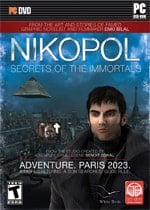The Future is Weird
Refreshing. Now that’s a word you don’t often hear being used to describe adventure games these days. Many offerings in the genre seem to increasingly revolve less around innovation and tend to focus more on recycling the same handful of dusty old ideas from the past.
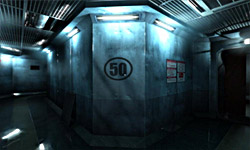
As a result, even current generation point-and-click adventures often come across like mice on a tread wheel: running along blissfully in their own little world but going absolutely nowhere. Suffice it to say, the crumbling, futuristic world in Nikopol: Secrets of the Immortals should bring a certain measure of solace for jaded PC gamers.
Nikopol is a rare example of a point-and-click adventure done right. It’s by no means perfect – few, if any, games truly are – but it does away with much of the garbage that typically bogs down so many others in the genre. Without meddlesome dialogue trees, unintuitive inventory systems filled with half-useless clutter, ridiculously convoluted paths to progression, or a snoozer of a story, the game easily stands out in the crowd. It’s anything but your typical adventure game, and that’s a welcome change indeed.
Inspired by the work of French graphic novelist and film director Enki Bilal, the game takes place in a futuristic, plutocratic France run by an iron-fisted religious dictatorship. While the wealthy and powerful are walled up at the center of the city, the have-nots must fend for themselves in the dilapidated remains of civilization outside the heavily fortified enclosure. These run-down outskirts is where the starving artist Alcide Nikopol takes up residence, joins a rogue religious sect, and gets drawn into an intriguing plot involving Egyptian gods, a giant blob of parasitic goo, a maniacal robot, and his own father who mysteriously falls from space in a stasis capsule. The future, it turns out, is quite weird. Admittedly, the story is out-there, but it’s also one of the more inventive sci-fi tales of late, and it’s pulled off in a way that keeps you wanting to dig deeper.
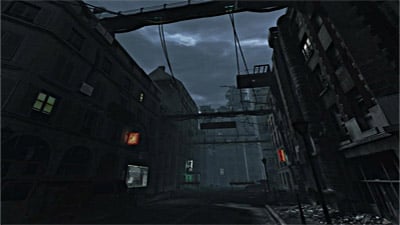
The game’s bold artistic direction – France re-envisioned as an impoverished industrial wasteland of crumbling old-city architecture juxtaposed against cold, modern technology – impeccably punctuates the desperation and futility of living in the dystopian society. As dark, gloomy, and mechanical as each location is, the high level of detail worked into every inch of the numerous environments and gritty characters makes the setting all the more realistic. Nikopol’s well beyond condemned flat, where you start the game, is striking – both in its state of disrepair and the attention clearly given to making every object, nook, and cranny stand out. Other locations are equally impressive. Transitions between each of the main chapters and areas play out in an unusual mixture of animated cutscenes and comic book-like pull out frames. The whole thing is very stylish and cohesive.
Utilizing a very streamlined control scheme makes it easy to grab a snack during the single, lengthy sitting it will probably take most players to get through Nikopol; this game’s a one-hander. Hey, it works. Instead of moving around a static 2.5D backdrop, the game runs in a fully 3D, first-person perspective that allows you to explore the immersive environments from any angle you choose. Moving to different rooms, or different areas within a room, is done by clicking the mouse whenever directional arrows are present. The “teleport” transition is a little unrealistic. However, walking all the way across the room is overrated anyway. Left clicking interacts with objects, and right clicking opens the single basic item menu. It’s easy as pie.
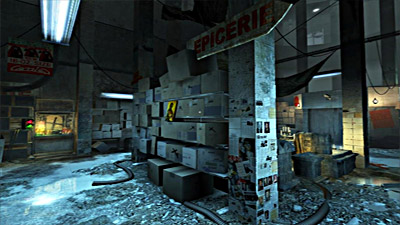
Nikopol is far more linear than most adventure gamers will be used to. There’s a pretty clear goal driving you forward at different phases in each of the five chapters; you’ll spend more time figuring out what needs to be done in a particular spot and how to do it, rather than roaming around aimlessly through vast expanses of corridors and static screens.
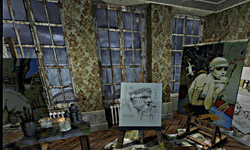
It actually works well in this case, yet some experienced players may find it a little less complicated exploration-wise. Of course, there are plenty of puzzles to solve, and most of them are quite logical. Each task has a direct purpose that connects to your mission and the broader story. Whether it’s gathering the components to paint an important portrait, fidgeting around with power couplings to unblock a subway tunnel, or manually disassembling a lock to escape a crate, putting the pieces together for each puzzle is rewarding and challenging.
You won’t find a lot of MacGyver-style item combining; most of the puzzles require interacting with the environment directly or using inventory items intuitively on hotspots. The difficulty curve varies. There are some particularly tricky puzzles, and a few extremely tough ones that require lots of trial and error, but most of the challenges are unique and integrate well into the events in the story.
Adding an element of suspense and tension, there are frequent moments when you’ll suddenly find yourself thrust into a position where there’s a very limited amount of time to accomplish the task at hand – such as when there’s a slathering beast about to break down your door or when a guard is about to turn the corner and catch you during a stealth maneuver. Failing to figure out what has to be done and doing it before time runs out triggers some pretty interesting death scenes. Fortunately, the game is far from draconian. Dying is only a minor nuisance, since you’ll get a hint and then start over at the beginning of the time section. Still, this changes the gameplay up a bit and injects some excitement into the mix.
Nikopol is a concise, smoothly flowing sci-fi adventure that offers plenty of challenge for the old school crowd and a more pleasantly streamlined and updated approach to the genre for anyone who’s been longing for something a little different. The game does run a tad on the short side. However, the quality of the gaming and storytelling is substantially high throughout most of the journey. It’s a visually impressive experience, and a worthy addition to your adventure game collection.
RATING OUT OF 5 RATING DESCRIPTION 4.6 Graphics
Extremely impressive from the ground up. 4.0 Control
Easy controls make for one-handed gameplay. 3.8 Music / Sound FX / Voice Acting
Interesting tunes fade in and out at appropriate moments, and the voice work is solid. 3.8 Play Value
Shorter than usual, but a good futuristic adventure all the same. 4.1 Overall Rating – Great
Not an average. See Rating legend above for a final score breakdown.
Game Features:
